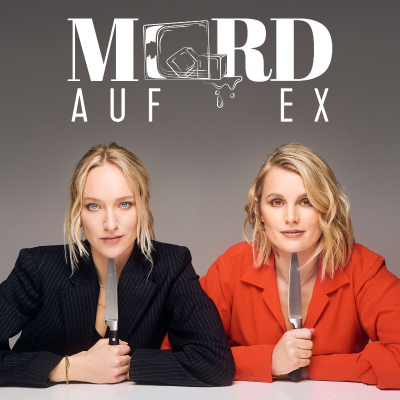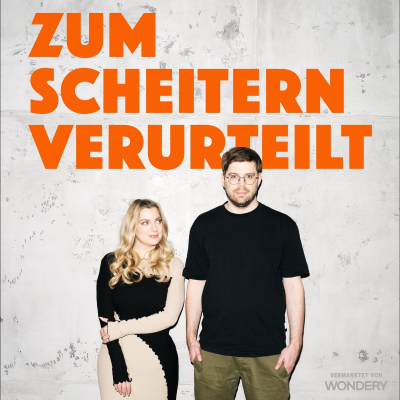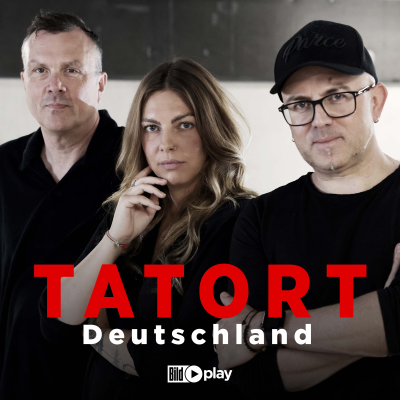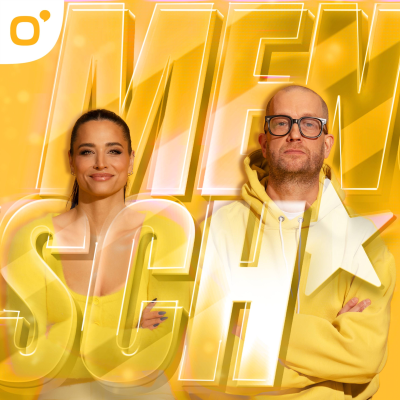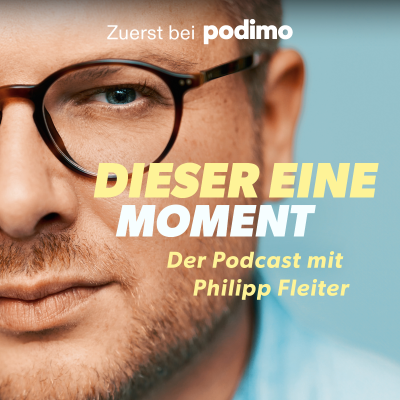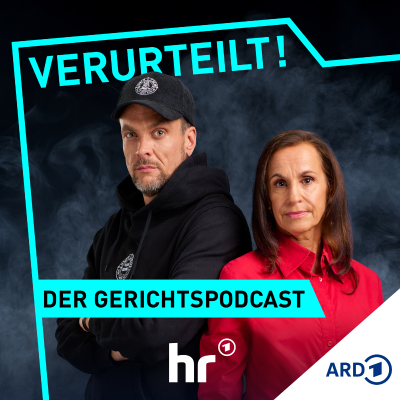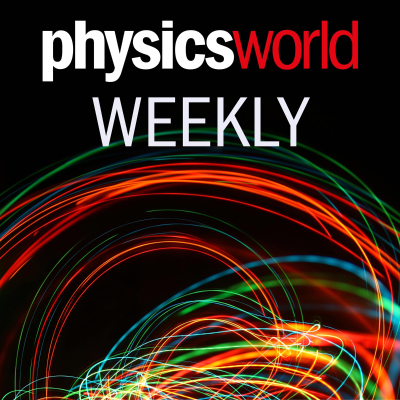
Physics World Weekly Podcast
Podcast von Physics World
Nimm diesen Podcast mit

Mehr als 1 Million Hörer*innen
Du wirst Podimo lieben und damit bist du nicht allein
Mit 4,7 Sternen im App Store bewertet
Alle Folgen
363 FolgenThis episode of the Physics World Weekly podcast features Hannah Earley [https://physicsworld.com/a/ask-me-anything-hannah-earley-i-love-theory-but-seeing-an-idea-get-closer-and-closer-to-reality-is-great/], a mathematician and physicist who is chief technical officer and co-founder of Vaire Computing [https://vaire.co/]. The company is developing hardware for reversible computing, a paradigm with the potential to reduce significantly the energy required to do computations – which could be a boon for power-hungry applications like artificial intelligence. In a conversation with Physics World’s Margaret Harris, Earley talks about the physics, engineering and commercialization of reversible computing. They also chat about the prototype chips that Vaire is currently working on and the company’s plans for the future.
Last week, Physics World’s Matin Durrani boarded a ferry in Hamburg that was bound for Helgoland – an archipelago in the North Sea about 70 km off the north-west coast of Germany. It was a century ago in Helgoland [https://physicsworld.com/a/return-to-helgoland-celebrating-100-years-of-quantum-mechanics/] that the physicist Werner Heisenberg devised the mathematical framework that underpins our understanding of quantum physics. Matin was there with some of the world’s leading quantum physicists for the conference Helgoland 2025: 100 Years of Quantum Mechanics [https://indico.mpl.mpg.de/event/17/] – which celebrated Heisenberg’s brief stay in Helgoland. He caught up with three eminent physicists and asked them to reflect on Heisenberg’s contributions to quantum mechanics and look forward to the next 100 years of quantum science and technology. They are Tracy Northup [https://prieview.univie.ac.at/research-groups/tracy-northup/] at the University of Vienna; Michelle Simmons [https://www.unsw.edu.au/staff/michelle-simmons] of the University of New South Wales, Sydney; and Peter Zoller [https://www.ictp.it/external/professor-peter-zoller] of the University of Innsbruck. • Don’t miss the 2025 Physics World Quantum Briefing, which is free to read via this link [https://physicsworld.com/p/magazine/archive/physics-world-quantum-briefing-2025/]. [https://physicsworld.com/wp-content/uploads/2024/12/IYQST-logo-box-272x317.png]https://physicsworld.com/wp-content/uploads/2024/11/IYQ-logo-stacked-blue.png This article forms part of Physics World‘s contribution to the 2025 International Year of Quantum Science and Technology [https://quantum2025.org/en/about/] (IYQ), which aims to raise global awareness of quantum physics and its applications. Stayed tuned to Physics World and our international partners throughout the next 12 months for more coverage of the IYQ. Find out more on our quantum channel. [https://physicsworld.com/c/quantum/]
In this episode of the Physics World Weekly podcast we explore the career opportunities open to physicists and engineers looking to work within healthcare – as medical physicists or clinical engineers. Physics World’s Tami Freeman is in conversation with two early-career physicists working in the UK’s National Health Service (NHS). They are Rachel Allcock [https://www.linkedin.com/in/rachel-allcock-06a669178/], a trainee clinical scientist at University Hospitals Coventry and Warwickshire NHS Trust, and George Bruce [https://www.linkedin.com/in/george-bruce-696886149/], a clinical scientist at NHS Greater Glasgow and Clyde. We also hear from Chris Watt [https://www.linkedin.com/in/chris-watt-355336312/], head of communications and public affairs at IPEM, about the new IPEM careers guide [https://www.ipem.ac.uk/your-career/]. * This episode was created in collaboration with IPEM [https://www.ipem.ac.uk/], the Institute of Physics and Engineering in Medicine. IPEM owns the journal Physics in Medicine & Biology [https://iopscience.iop.org/journal/0031-9155]. Courtesy: RADformation [https://physicsworld.com/wp-content/uploads/2025/06/12-6-25-radformation_hq_logo-635x238.jpg]https://physicsworld.com/wp-content/uploads/2025/06/12-6-25-radformation_hq_logo.jpgThis episode is supported by Radformation [https://radformation.com/], which is redefining automation in radiation oncology with a full suite of tools designed to streamline clinical workflows and boost efficiency. At the centre of it all is AutoContour [https://radformation.com/autocontour/autocontour], a powerful AI-driven autocontouring solution trusted by centres worldwide.
This episode of the Physics World Weekly podcast features George Efstathiou [https://people.ast.cam.ac.uk/~gpe/]and Richard Bond [https://www.cita.utoronto.ca/~bond/], who share the 2025 Shaw Prize in Astronomy [https://www.shawprize.org/], “for their pioneering research in cosmology, in particular for their studies of fluctuations in the cosmic microwave background (CMB). Their predictions have been verified by an armada of ground-, balloon- and space-based instruments, leading to precise determinations of the age, geometry, and mass-energy content of the universe.” Bond and Efstathiou talk about how the CMB emerged when the universe was just 380,000 years old and explain how the CMB is observed today. They explain why studying fluctuations in today’s CMB provides a window into the nature of the universe as it existed long ago, and how future studies could help physicists understand the nature of dark matter – which is one of the greatest mysteries in physics. Efstathiou is emeritus professor of astrophysics at the University of Cambridge in the UK – and Richard Bond is a professor at the Canadian Institute for Theoretical Astrophysics (CITA) and university professor at the University of Toronto in Canada. Bond and Efstathiou share the 2025 Shaw Prize in Astronomy and its $1.2m prize money equally. This podcast is sponsored by The Shaw Prize Foundation. * Shrinivas Kulkarni, the 2024 Shaw Prize in Astronomy winner, has also appeared on the podcast. You can listen to that interview here [https://physicsworld.com/a/shrinivas-kulkarni-2024-shaw-prize-in-astronomy-winner-talks-about-his-fascination-with-variable-and-transient-objects/].
Quantum science is enjoying a renaissance as nascent quantum computers emerge from the lab and quantum sensors are being used for practical applications. As the technologies we use become more quantum in nature, it follows that everyone should have a basic understanding of quantum physics. To explore how quantum physics can be taught to the masses, I am joined by Arjan Dhawan, Aleks Kissinger [https://www.cs.ox.ac.uk/people/aleks.kissinger/] and Bob Coecke [https://www.quantinuum.com/meet-bob-coecke] – who are all based in the UK. Coecke is chief scientist at Quantinuum [https://www.quantinuum.com/] – which develops quantum computing hardware and software. Kissinger is associate professor of quantum computing at the University of Oxford; and Dhawan is studying mathematics at the University of Durham. Kissinger and Coecke have developed a way of teaching quantum physics using diagrams. In 2023, Oxford and Quantinuum joined forces to use the method in a pilot summer programme for 15 to 17 year-olds. Dhawan was one of their students. * The books mentioned in the podcast are Picturing Quantum Processes: A First Course in Quantum Theory and Diagrammatic Reasoning [http://www.cambridge.org/9781107104228] by Bob Coecke and Aleks Kissinger; and Quantum in Pictures: A New Way to Understand the Quantum World [https://www.amazon.co.uk/dp/1739214714] by Bob Coecke and Stefano Gogioso. Physics World is brought to you by IOP Publishing, which also publishes scholarly journals, conference proceedings and ebooks. You can download the book The Ringed Planet: Second Edition free of charge [https://comms.ioppublishing.org/k/Iop/theringedplanetfreeebook] for a limited time only. By Joshua Colwell, the book is a must read on Saturn and the Cassini mission. An updated and expanded third edition [https://iopscience.iop.org/book/mono/978-0-7503-6347-1] is also hot off the press. Browse all ebooks here [https://ioppublishing.org/publications/ebooks/] and remember that you can always read the first chapters of all IOPP ebooks for free. [https://physicsworld.com/wp-content/uploads/2024/12/IYQST-logo-box-272x317.png]https://physicsworld.com/wp-content/uploads/2024/11/IYQ-logo-stacked-blue.png This article forms part of Physics World‘s contribution to the 2025 International Year of Quantum Science and Technology [https://quantum2025.org/en/about/] (IYQ), which aims to raise global awareness of quantum physics and its applications. Stayed tuned to Physics World and our international partners throughout the next 12 months for more coverage of the IYQ. Find out more on our quantum channel. [https://physicsworld.com/c/quantum/]




